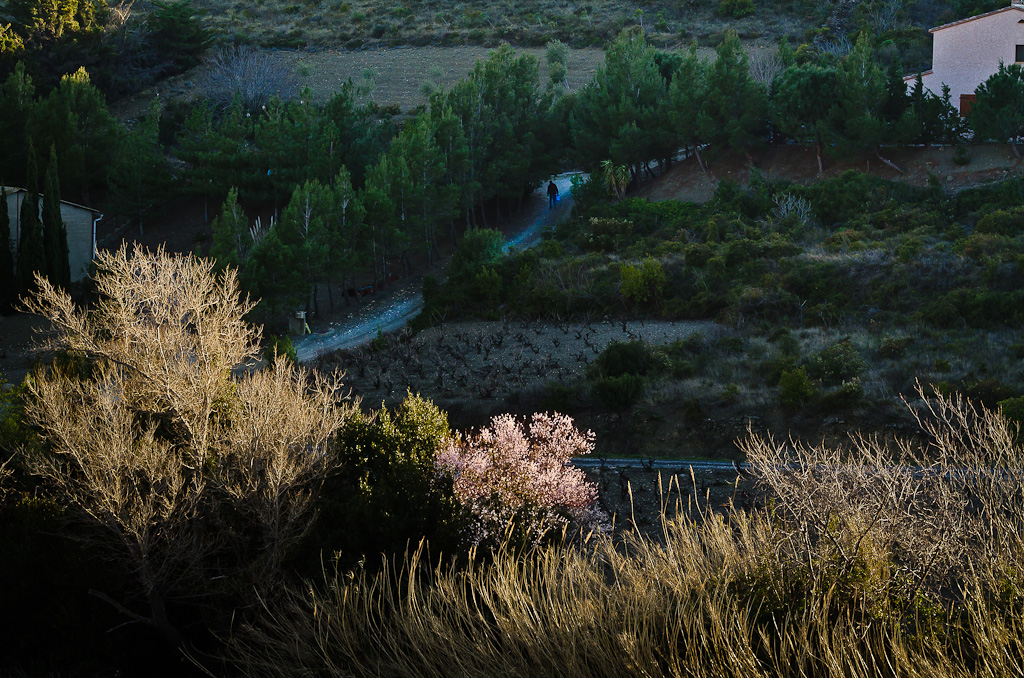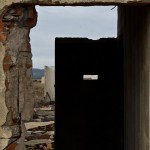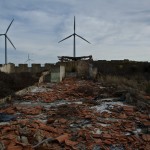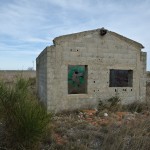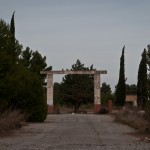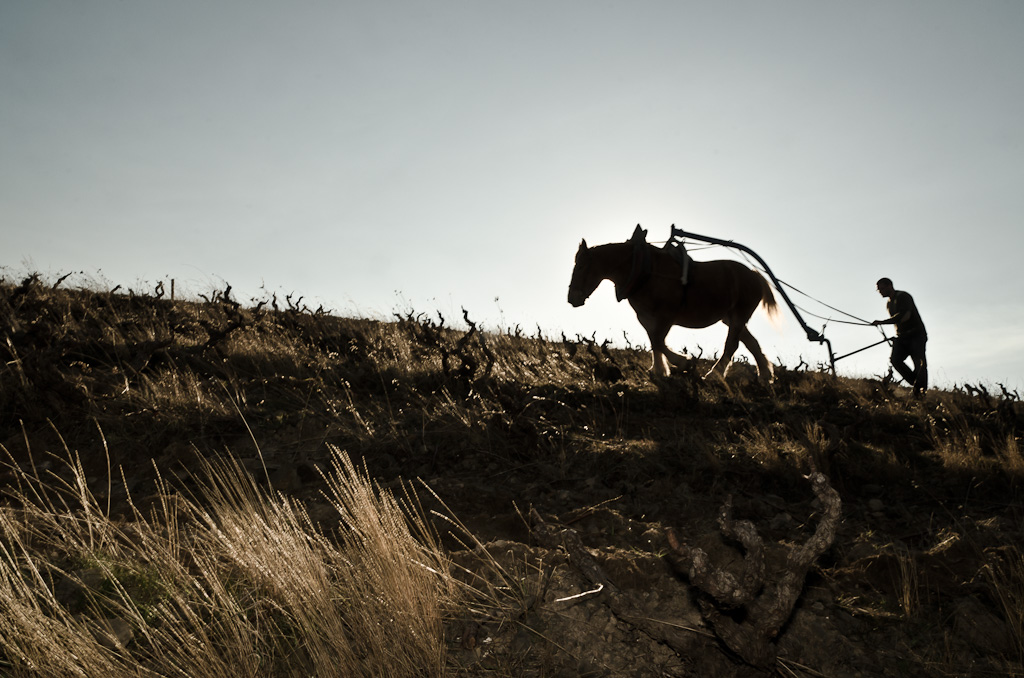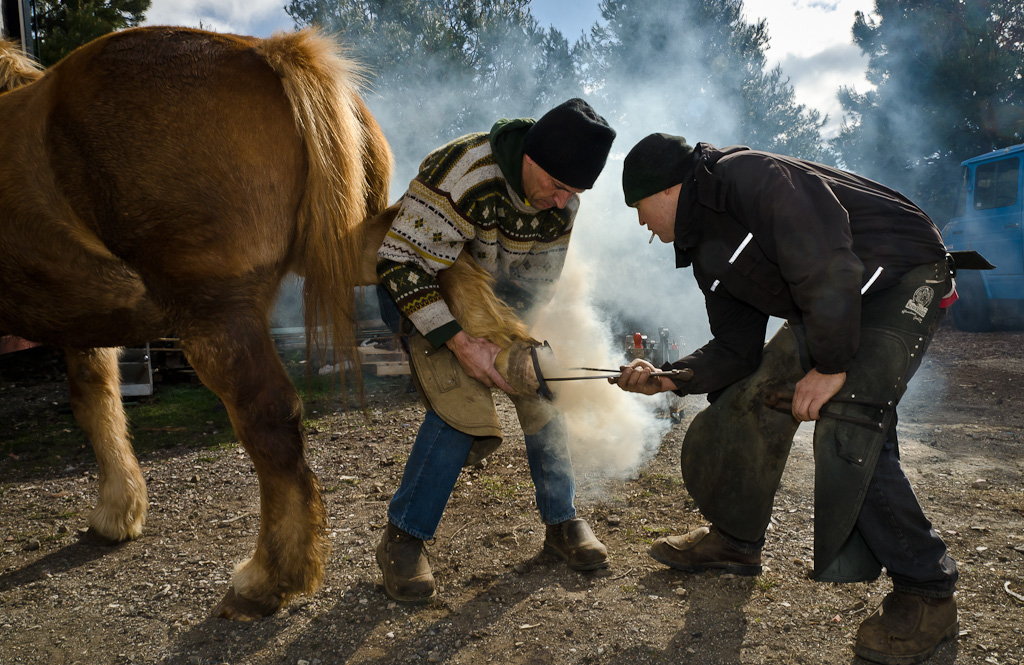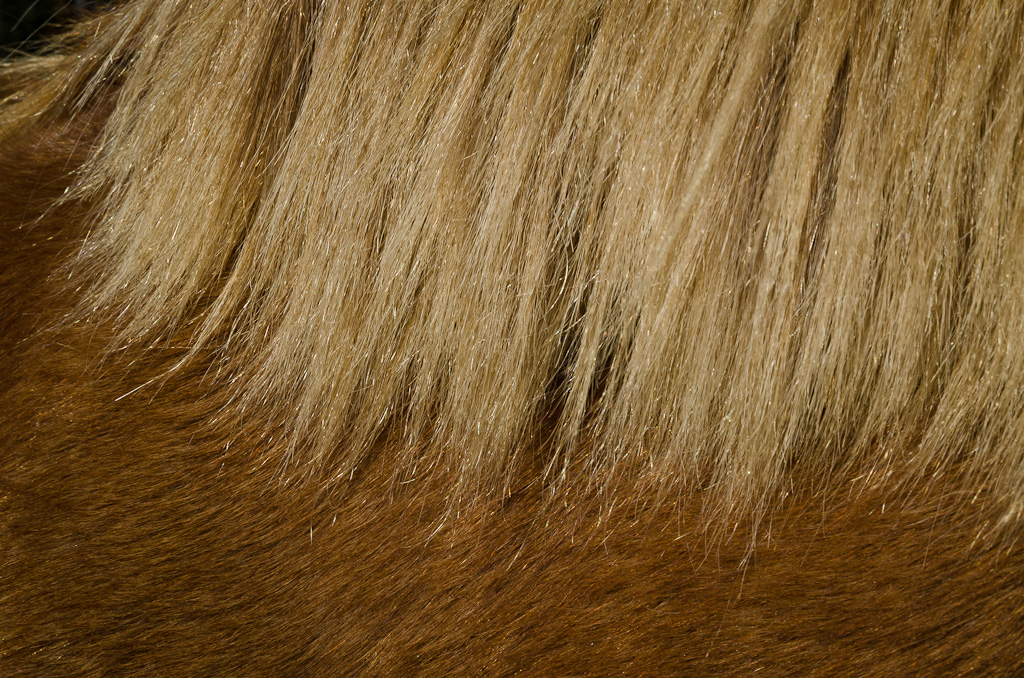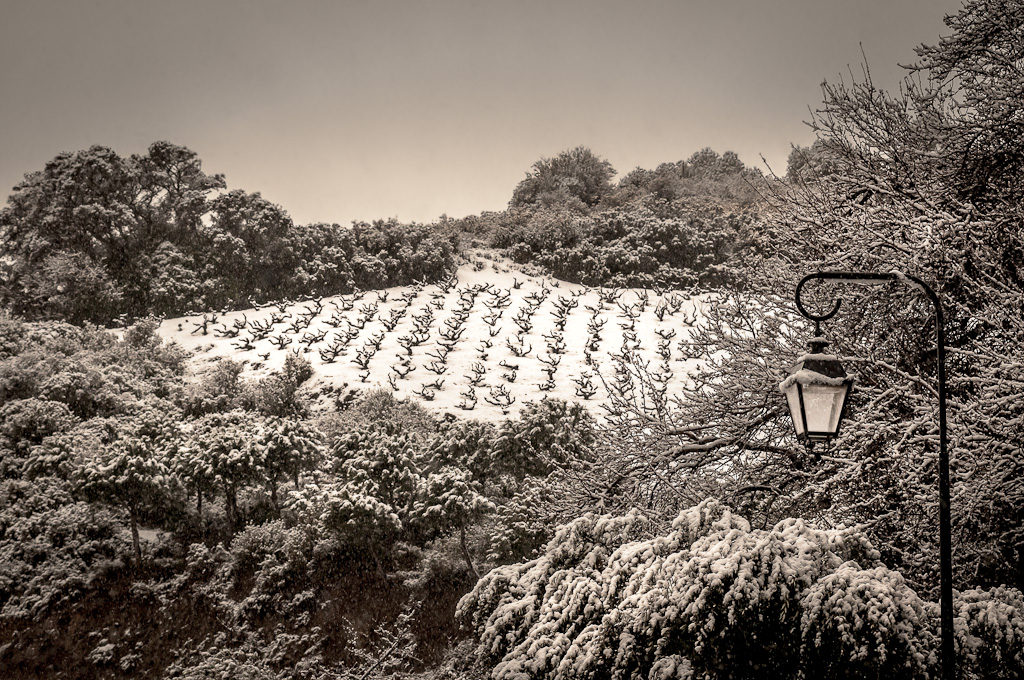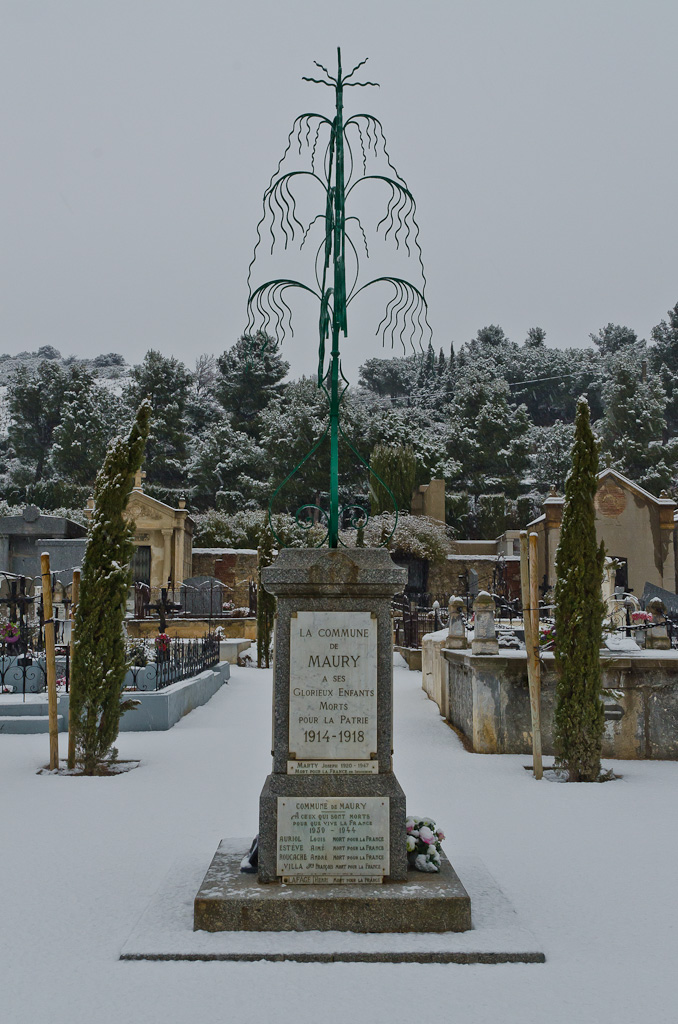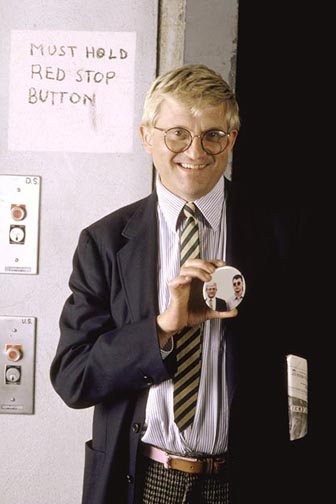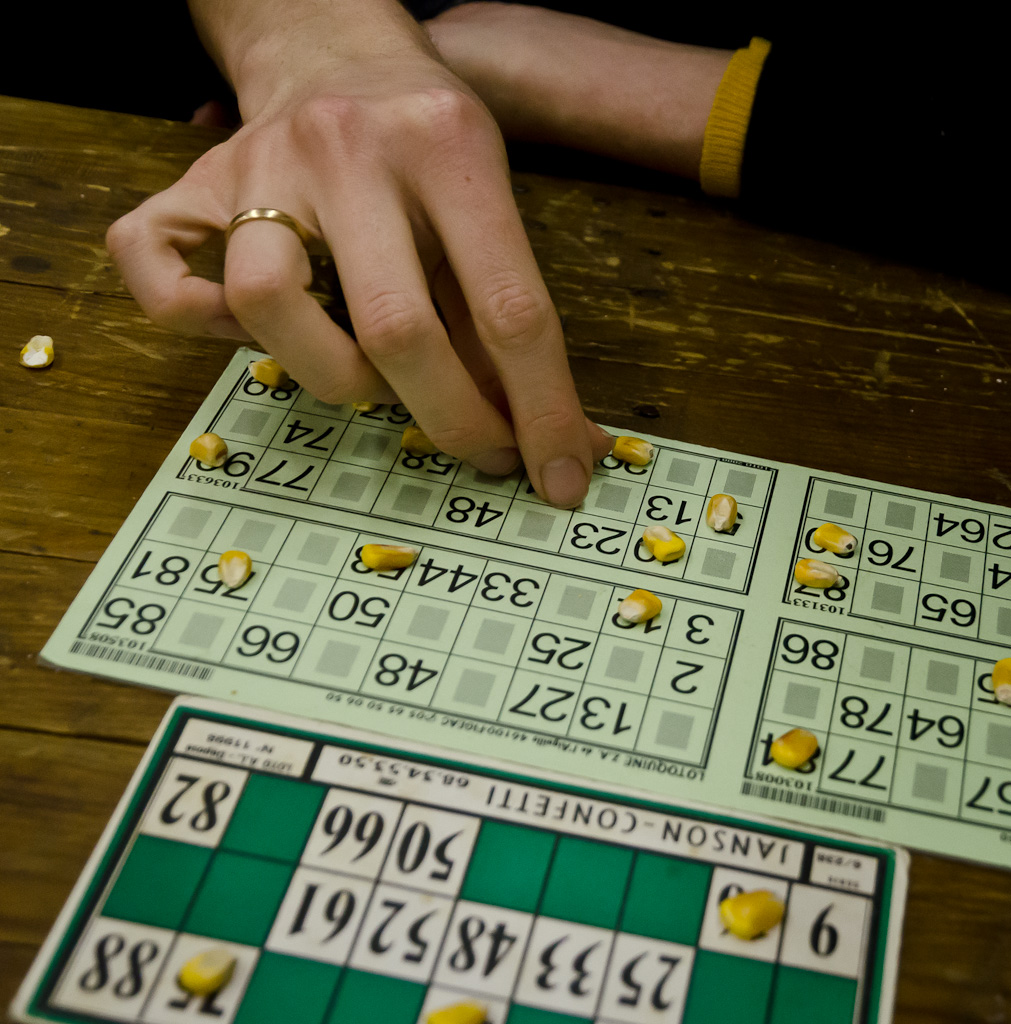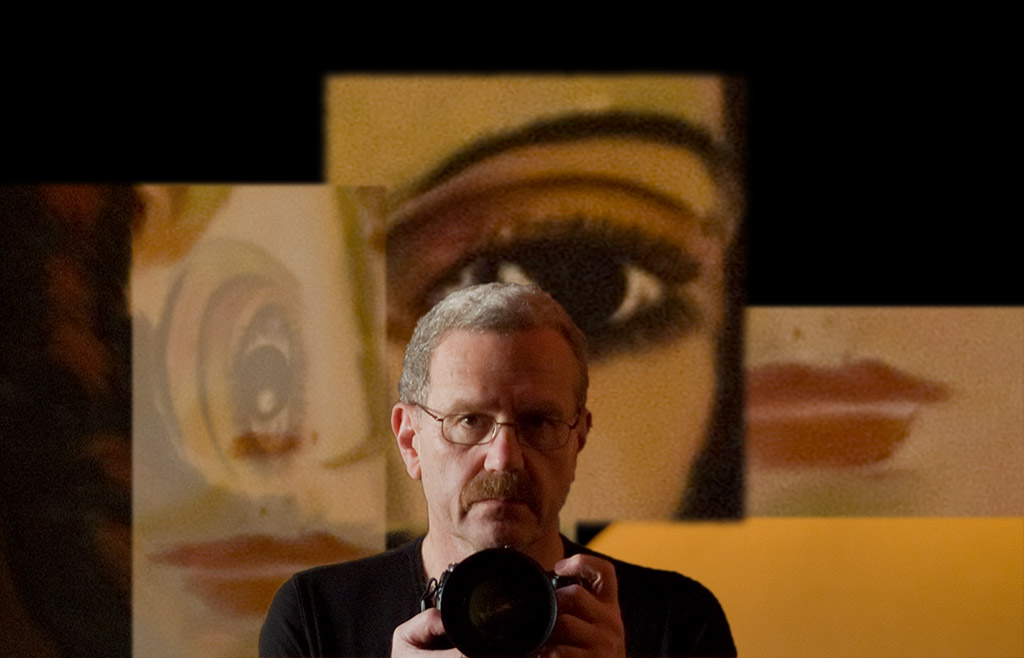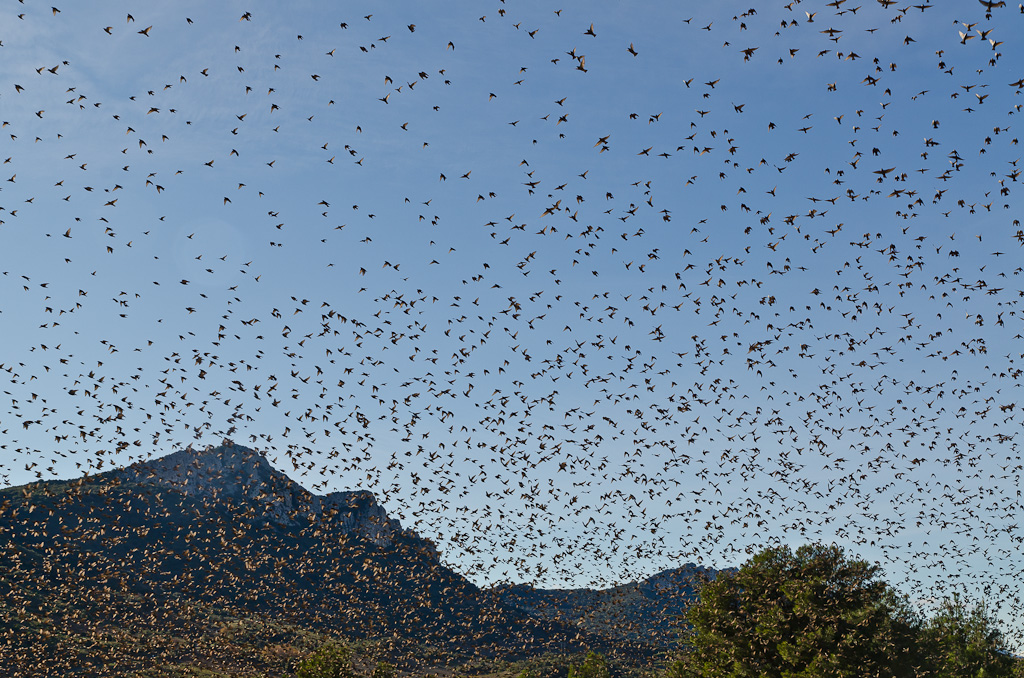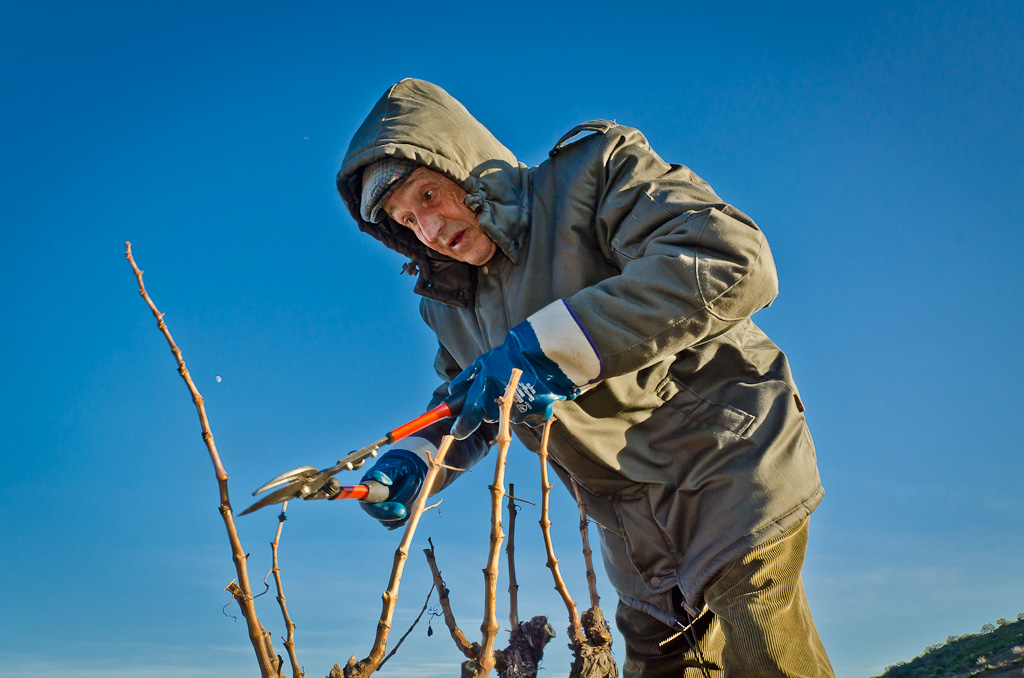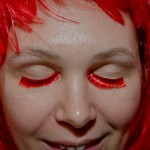We’re charging into spring now with warm weather, longer days, blossoming fruit trees and life returning to the streets. The kids aren’t rushing home after school but staying in the streets a bit to play, neighbors stop to greet and say a few words about how beautiful the weather is. Thierry has flowers to plant and asparagus to eat and people stop to chat at the market. The café scene has moved to the terrace and that brings more people out for an aperitif. The 2011 rosés are appearing at the tasting rooms. The wine growers have been pruning and plowing and for some, attention now turns to bottling the 2010 vintage.
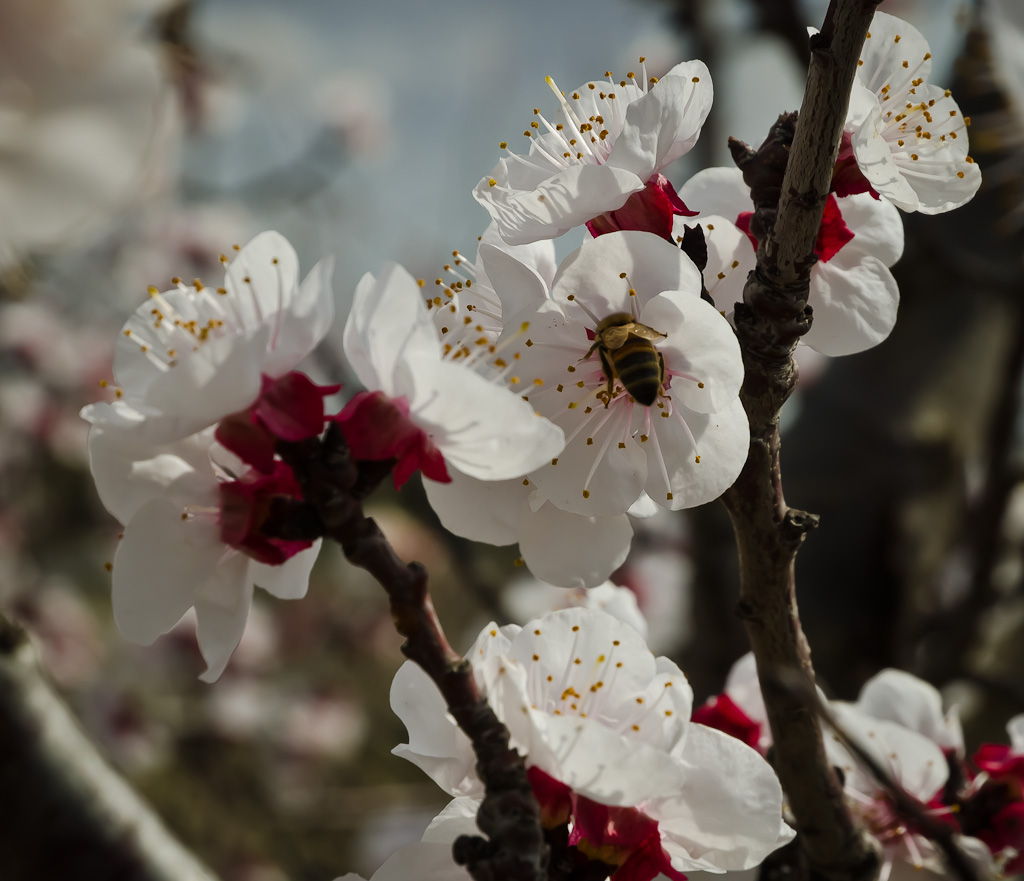
I went to Thunevin-Calvet the other day to watch the bottling of the first vintage of Eugenia Keegan’s Grenache Project. Eugenia is a winemaker who used to live in the Napa Valley, now in Oregon and for years has tortured herself making pinot noir. Now she’s hung up on grenache, making wine here with Jean-Roger and Marie Calvet, and also in Chateauneuf du Pape, and soon in Spain. Winemakers are a strange and restless breed: Randall Grahm, who had great success with Rhone varietals in California (Bonny Doon) has channeled Don Quixote and gone in search of the perfect vineyard to make Burgundian pinot in California. Dave Phinney, whose Zinfandel-based Prisoner garnered huge fans, points and sales, is now in Maury making wine from grenache. Often when you talk to winemakers who have migrated here, the first thing they say is that they were looking for old vine grenache and discovered Maury.
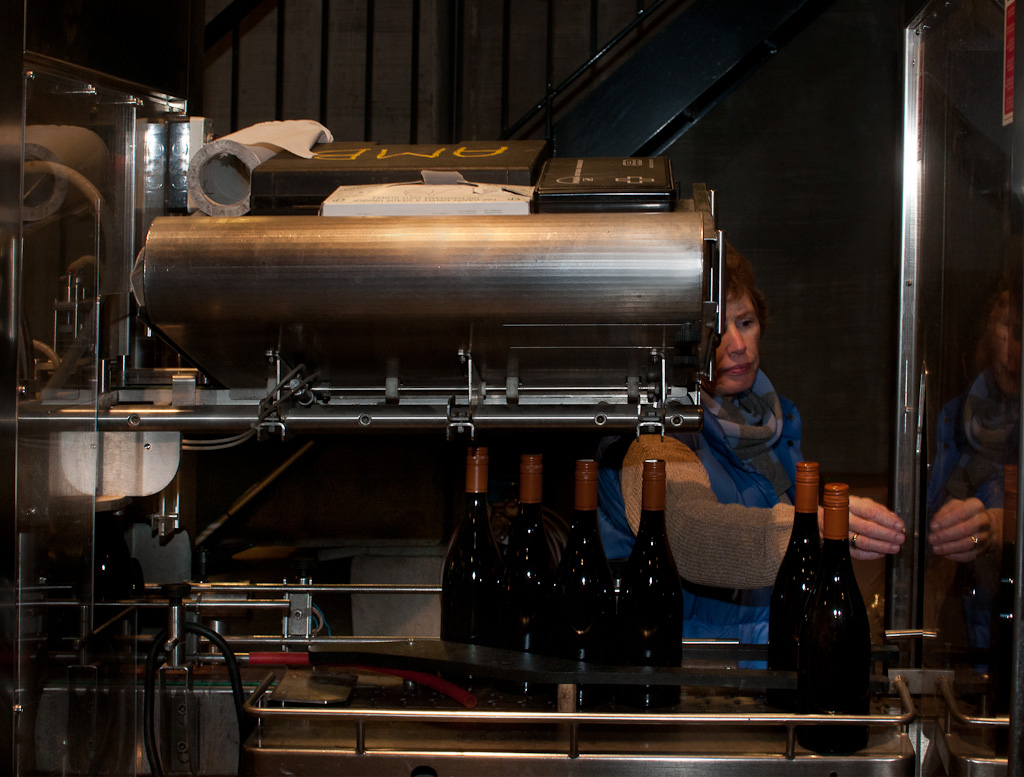
Eugenia speaks of grenache, not like someone selling wine, but more like a seeker discovering the truth, it’s more religion than marketing.
So I went round to the bottling and as is often true around here found a family affair. Jean Roger and Marie were packing cases, Roger Calvet, JR’s father was labeling them and Marie’s grandfather arrived a bit later to offer the perspective of his 90 years.
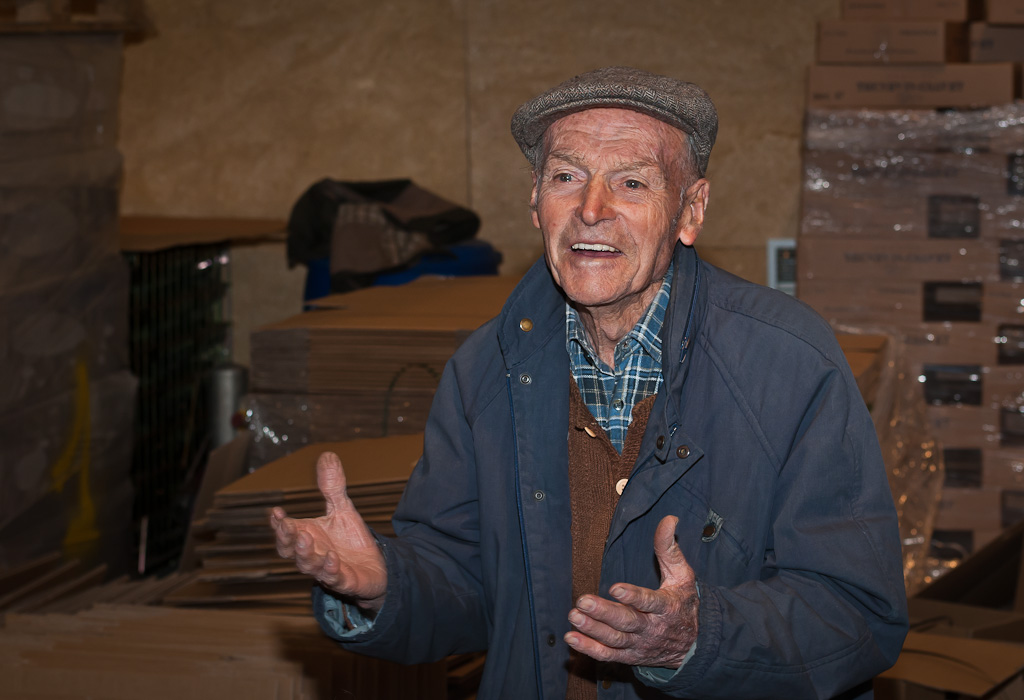
Eugenia was nervous. I though this was just a formality, that the moments of truth were in the vineyard, at harvest and in the initial processing. But Eugenia was nervous because all that work was now on the line. She had never bottled in France before, she had never used screw caps. Mistakes made at this point could not be corrected. Professionals were in charge and everything was most likely to go well, but what if it didn’t? She was this bundle of nervous energy who only relaxed when she took a spot on the line, packing the bottles into cases. But Eugenia was in good hands. Her French family knew exactly what to do.
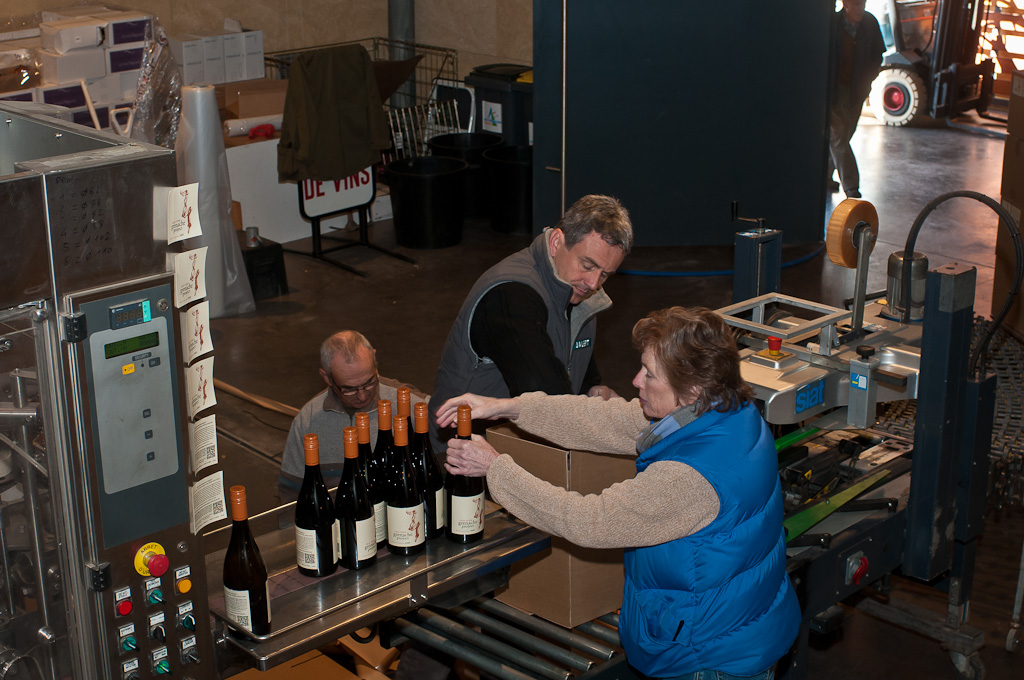
All’s well that ends well.

